The sun has the knack for putting smiles on faces and even more so for c-store retailers who can count on this season to pull in BWS shoppers
After enjoying the hottest May Bank Holiday weekend on record it seems summer might make a decent appearance this year. Just as well too, because retailers can’t afford to miss out on this massive BWS opportunity. Alcohol has retained its place as the top-selling FMCG category in the UK, worth £16.1bn in value sales (IRI Top Categories Special Report 2017), and this is certain to be bolstered further in the summer months with The World Cup, Wimbledon, The Grand Prix and BBQs providing just a few key opportunities for retailers to heat up their BWS sales.
Sid Sidhu, owner of Sukhi’s Budgens, in Kenilworth, says alcohol is a huge opportunity in the convenience channel, especially when summer starts and shoppers get into the garden party hosting spirit.
“If we look at what’s happening in the restaurants and the on-trade, they are struggling as eating in is majoring more than ever before. Eating out is fantastic but the cost is prohibitive and people are viewing that as much more of a rare treat. Instead they are trying to create a similar experience at home for less than half the price and that’s where we convenience store retailers can really come in.
“If we can provide everything shoppers need to create that social occasion at home then we can massively benefit. Summer time is a great opportunity as people are more keen to host parties and have last-minute get togethers, and we are perfectly placed to cater to them.”
Creative cocktails
Barefoot Wine provides cocktail recipes on its website. Here is a selection of options:
Bubbly Pink Punch: Bottle of Barefoot Bubbly Moscato; 425ml canned mandarin oranges in light syrup; one cup fresh or frozen strawberries; juice of ½ lemon; 30ml syrup; club soda (optional)
Down the Aisle: 60ml Barefoot White Zinfandel; 25ml gin; 20ml lemon juice; 20ml simple syrup; lemonade; ice; sliced strawberries; and cucumber to garnish
Light Your Fire: 160ml Barefoot Moscato; two frozen bananas; two-four shots of tequila; two limes juiced; 40g fresh mango; salt for the rim of the glass
Pink Grapefruit Mimosa: 85ml Bubbly Pink Moscato; 85ml pink grapefruit juice; sliced strawberry for garnish.
Premiumisation
Heineken recently revealed its ‘Greenpaper’ of category advice and reported that premiumisation is a huge long-term opportunity for growing alcohol sales. It recommends retailers encourage premiumisation by tempting people to treat themselves with a premium drink at the end of a long day, and encouraging them to trade up when they’re buying a gift.
Heineken’s Greenpaper also recommends that retailers give away merchandise such as glassware so as to create the perception of extra value for money for the shopper.
Andy Wingate, category controller at Heineken, says that the need to offer extra value to the purchase is particularly important when it comes to engaging with millennials. “Eighteen to 24 year olds have a different relationship with alcohol than older generations. We need to work to re-engage them with the beer and cider category.”
The 18-24 age category is particularly important when it comes to summertime opportunities. Amanda Grabham, head of brand marketing for alcohol at SHS Drinks, says 18 to 24-year-olds are less restrained by family and work commitments, and therefore are more likely to benefit from extended university or college vacations, and consequently more time to enjoy socialing - and drinking - with friends.
What’s more, this age group has the freedom and energy to make the most of impromptu socialising opportunities when the sun shows its face, and are therefore more likely to choose a c-store, perfect for their impulse shop. She adds: “As the number one RTD [ready to drink] choice amongst students (GB TGI Q2 2017 Kantar Media UK), WKD has a huge following keen to make the absolute most of the summer.”
Something light and sparkling
Jerry Tweney, owner of Budgens Prestbury Village Stores, in Cheltenham, says that as soon as summer hits, prosecco, white and rosé wines start to fly out.
“I had a £10 bottle of rosé in the store which barely moved through the winter months but as soon as it warmed up earlier this year it started selling really well,” he says.
Ben Smith, corporate communications at Concha y Toro says that wine is one of the main drivers of basket spend for shoppers. He says the company has launched a new ‘Summer Edition’ rosé from Casillero. “It’s a completely fresh design and the wine itself has been made in a lighter style which is becoming so popular now.”
Smith adds that Malbec is a great addition to a barbecue.
“Barbecues are a big driver of convenience wine shopping, so retailers should ensure they have plenty of barbecue friendly wines like Malbec on their shelves. Our Trivento Reserve Malbec is the UK’s number one selling Malbec and has just launched a major new marketing campaign with Discovery Channel. One way to drive wine sales is to merchandise wines like Malbec with the meats on sale.
“Wine in a c-store is often an impulse purchase, or a ‘top-up’, so it’s important to keep plenty of wine on chill, especially the leading summer styles like Sauvignon Blanc and rosé. Don’t forget to have some premium options available too as people are often visiting friends or relatives and want to bring a bottle as a gift.
“We have lots of new products launching this year – most often with the emphasis on premium. We’ve just released a new premium Cabernet Sauvignon from Casillero del Diablo – called Reserva Especial.”
Keep it chilled
Harry Goraya says it’s always important to provide some chilled offerings throughout the year but this becomes paramount in the summer, especially when it comes to those typical summer sips, like the fruity wines and ciders.
“We tend to make an adjustment as we come into summer as to the space allocated to these summery drinks as we always get an uplift of those drinks when they’re chilled.”
Grabham says this is crucial for those younger adults who tend to be particularly impulsive and therefore require their drinks ready chilled. “The key to success can be summed up in one word: chilling. This is the absolute key priority. The 18-24 ‘now generation’ wants its drinks pre-chilled; it wants them consumption-ready.
“When it comes to warm weather purchases, young adults won’t plan ahead, but retailers definitely need to.”
Low and no alcohol
Jonathan Ford, trading director for wholesale and convenience at Heineken, says that in order to appeal to these younger adults, it’s important to take into account their strong interest in maintaining a healthy lifestyle.
The no-, low- and gluten-free segment within beer and cider has grown by +18% in value (Nielsen YTD Value Sales data 24 February 2018). What’s more, no- and low-alcohol wine now accounts for 47.4% of revenue share of the total light and fruity category, with sales up +7.8% of revenue for no/low abv wines from last year (Nielsen MAT 24 February 2018).
Heineken has found that 34% of consumers limit calories and this is why Heineken 0.0, at just 69 calories, is a great option for them.
“There’s never been a greater desire amongst consumers to live better and so we have to provide products that allow them to make these healthy lifestyle choices,” says Ford.
He adds that Heineken is working to offer more low- and no-alcohol options, such as its new Old Mout zero alcohol. The brand is also working to promote and dial up its products’ quality ingredients and heritage to improve shopper perceptions.
Sid has certainly noticed a growing number of shoppers buying alcohol-free products and he think the beer and cider categories are benefitting from this trend more than wine.
“We now sell three different alcohol-free beers; Becks Blue is the long term favourite, Heineken 0.0 is a strong brand and therefore sells well, and we’ve just added the Budweiser Prohibition which has also started doing well.
“We merchandise these within the alcohol category but ensure to signpost them very clearly with pos. We want people to realise we have that offer but we also don’t want people to accidentally pick them up when they mean to buy the full alcohol product!
“I would probably agree with the manufacturers that these are most frequently bought by the younger customers but I do see older shoppers buying them as well and I think they’re bought for a wide range of occasions, like mid-week drinking as well as parties.
“However, when it comes to wine, I think people have a negative perception of the alcohol-free wines as they might think they’re just going to be a sweet drink for double the price of a soft drink. I tend to sell more of the sparkling Shloer which comes in bottles with the cork in. This provides the wine-like experience but without the higher price tag,” Sid says.
In 2017, Bud Light re-entered the UK market, 16 years after the US brand’s previous ill-fated launch. As well as having just 27 calories per 100ml, Bud Light has a lower abv than standard Budweiser, at just 3.5%. This time round was clearly better timing as the brand claims that the re-launch has been successful in attracting a younger audience.
Aleksandrina Yotova, consumer analyst at GlobalData, says: “Over a third (35%) of UK consumers associate ‘healthy’ with ‘low-calorie’, according to our 2017 Q4 survey. However, this rises to 49% when looking at 35-44 year olds specifically, and is slightly higher for female than male consumers.”
She adds that another popular sub category amongst this age range could be the gluten-free skus.
“This highlights millennials as the consumer groups on the lookout for certified vegan products. The same age group is also more likely to opt for gluten-free products. In the UK, 8% of consumers aged between 18 and 34 associate gluten-free with ‘healthy’, according to our 2017 Q4 survey. This compares to a lower ratio of 5% when looking across all age groups in the UK. Low-calorie, vegan and gluten-free, rather than low alcohol content, are therefore set to be the winning attributes for beer targeting young adults.”
This trend is potentially all the more important during the summer months. Angela Prescott, store manager at Spar Roe Lane, Southport, points out that shoppers tend to look for lighter alcohol options in the summer as the occasions tend to involve afternoon drinking.
“Shoppers definitely tend to go for the lighter lagers that you can have with a slice of lemon or lime as they don’t want something heavy that will send them to sleep at 6pm. Things such as Peroni and San Miguel always go well,” she explains.
Jerry Tweney, owner of Budgens Prestbury Village Store, in Cheltenham, agrees this is the time to reduce the heavy ales and increase the Morettis, Peronis and Crabbie’s Ginger Beer. He also says it is the right time to bring out the bigger packs. As well as larger bottles and packs of beer, he sells kegs when the sun comes out as people want to buy enough to share with friends throughout the day.
“We’ve just extended our range of kegs so we now have four different types of beer. Over the warm weekend in April we sold three of these which I thought was pretty impressive considering they’re £14.99 each. I merchandised these within the barbecue section which definitely helped.”
Echo Falls has launched a format ideal for the summer season named “Festi Falls” - a double tap bag in box fruity wine (rrp £15) offering both Fruit Fusion Summer Berries and Peach & Mango in one box.
The 3ltr double flavour pack is aimed at the growing consumer interest in outdoor occasions driven by festivals, picnics and BBQs.
“Wine on Tap is transforming the image of boxed wine and is a much more enticing presentation than the traditional offering,” says Laurence Hinton, brand manager for Echo Falls. “The introduction of a larger format variety from Echo Falls is a no brainer as our shoppers can enjoy their favourite wine in a style that makes it easier for them to enjoy when they are out of the home.”
To ensure it’s hitting the mark with festival goers (if the name wasn’t enough), it’s also giving away branded ponchos inside packs.
Unmissable events
With so many events this summer it’s important to keep a note of all the dates:
19 May: Football - FA Cup final and Scottish Cup final
26 May: Football - Champions League final, Kiev, Ukraine
14 June-15 July: Football - World Cup, Russia
2-15 July: Tennis - Wimbledon
7-29 July: Cycling - Tour de France
8 July: Formula 1 - British Grand Prix, Silverstone
19-22 July: Golf - The Open, Carnoustie
21 July-5 August: Hockey - Women’s World Cup, London
1-5 August: Cricket - England v India Test series starts at Edgbaston
1-12 August: European Sports Championships, Glasgow and Berlin
28-30 September: Golf - Ryder Cup, Le Golf National, Paris
Merchandising
Of course, merchandising is always important whatever the category but when it comes to the BWS aisles, Heineken’s research shows that, as well as the category being at the back of the store, shoppers only spend 30 seconds looking at the BWS section. This gives very little time to capture shoppers’ attention, meaning merchandising is all the more important.
With 52% (Nielsen Scantrack Total Off Trade) of beer and cider sales being sold over key seasonal periods, Heineken advises retailers to capitalise on the growing number of sporting events taking place during the summer by creating displays to remind shoppers of each event in the weeks leading up to it.
Harry plans to advertise his alcohol promotions on the till screens throughout the summer months, as well as on social media. However he adds that there’s no point in advertising your products if you’re not going to make them easy for shoppers to find.
“Social media is a great tool for promoting these products but make sure you post the picture of the product in store and ensure that you keep it in the same place or ensure it’s easy for the shopper to find,” he says.
“What products we advertise on social media and on the till screens will just depend on what’s on promotion.”
Harry always ensures to provide a meal for tonight solution in store but says he turns this towards the barbecue occasion in the summer months.
It’s a good idea to ensure your barbecue offering is up to scratch with all the components to a great party as opposed to simply providing some burgers, sausages and disposable grills, Sid suggests.
He adds: “When it comes to barbecue season we have to make sure we are stocking every element of the barbecue mix as well as the alcohol in order to really benefit. If a shopper comes into our store and sees we don’t have the buns, or the sausages, or the charcoal then they might go somewhere else where they can buy everything in one store.”
The number of occasions where people are consuming alcohol with a meal has increased by over 5% in the past four years, Heineken says. Beer and cider is a great fit with meals, with 43% of large single bottles being purchased as an accompaniment to food (Heineken Category Image Study 2017). Heineken says this is thanks to 18-24 year olds who are increasingly choosing to drink beer and cider with their meals instead of wine. The brand advises retailers to try merchandising more formal options to capture date night opportunities and merchandise zero alcohol beer with healthier meal choices to capture the interest of the health conscious.
Therefore Lancaster says retailers should merchandise food with beer and cider, as well as with wine. “It’s interesting that, actually, beer can taste better with certain foods than wine does. A stout with cheese tastes better than red wine with cheese!
“We aren’t saying to retailers that they should take wine out of their meal offer but they can add beer as another option.”
When it comes to summer pairings, Lancaster has the ultimate solution. “Amstel is excellent with fish and chips as it cuts through the batter, ” he argues.
David Mallory, channel director, E&J Gallo EMEA, says: “Cross-merchandising is incredibly important in order to encourage consumers to make quicker decisions and increase spend. Over the summer months, there will be opportunities to cross-merchandise with BBQ food, bank holiday weekend party snacks and picnic products.
“Creating an eye-catching display that pairs wines with certain foods will make matching wine to food much easier for consumers. This will therefore speed up a consumer’s decision-making process and increase spending.
“Consumers can also target impulse shoppers with enticing offers and eye-catching merchandising – an impromptu picnic in the park is the perfect time to attract new customers to the Spritz range, for example.”
HIM advises retailers to make the most of times when people are likely to be entertaining as its research shows that shoppers on this mission are more likely to engage with and look at in-store displays. Holly Franklin, client development manager for HIM, believes this could be because shoppers who are entertaining are on a less automatic shop and they are more open to new ideas.
This opportunity is growing too. She explains: “C-stores can stand out more by creating more from the everyday events. As many as 75% of millennials would rather stay in than go out so the big night in occasion is a big opportunity.”
Being quick to respond to weather changes and being prepared for sunny spells can also help drive incremental sales, as research has shown that 58% of shoppers saying that a good weather forecast has influenced them to organise a BBQ (HIM Summer Shopper Bitesize, August 2017).
One piece of improvisation that is paying off for both Harry and Sid is combining slush with alcohol miniatures.
“The important thing to remember is to be legally compliant. Sell the idea of mixing the two products and let the customer do it themselves rather than actually mixing the two for the customer in store,” Sid advises.
“I’ve had people buy up to six slushies and six minis at a time! They’re on their way to a party and want to take something interesting to add to the mix. We just offer them the coffee cup holders which carry up to six quite easily. We can really get through a lot of this in the summer and we ensure to keep the mix in the freezer so that we can top it up quickly throughout the day.”
Harry adds that he’s been informed that his raspberry and lemonade flavour Snowshock slushie mixed with vodka tastes just like a WKD.
Premiumise the pink stuff
Premium and dry styles of rosé have been particularly popular in recent months and this is set to continue as temperatures rise. This sector is seeing growth of +39% in volume and +44% in value.
Best-selling brand Dark Horse (Nielsen MAT 24 February 2018) recently launched its Dry Rosé which fits within this trend and is already the number number one premium rosé in the US (IRI 26 November 2017, Top 10 brand aggregate of blush and blush flavours, 750ml).
David Mallory, channel director, E&J Gallo EMEA, adds that Barefoot Pink Pinot Grigio has been a key driver in the growth of drier rosés.
He says: “Since its launch it has added £4.3m to the rosé category (Nielsen MAT by value 24 Februay 2018) and continues to show explosive growth while also adding value to the rosé category, selling for 43p more than the average price of rosé.”
However, the sweeter White Zinfandel varietal still stands as the UK’s top rosé accounting for £146m (Nielsen total off trade MAT by value 24 February 2018).
RTDs
The fact people are out and about so much more means RTDs come into their own.
Jerry points out that RTD cans are the perfect offering for convenience stores to offer, providing that convenient drink format.
“The gin and tonic and Pimm’s cans see a big uplift in the summer. We noticed this a lot during the Cheltenham races in March so we’ve decided to extend our range to offer more of the lighter flavours on top of the rum and cokes.
“I can definitely see this category growing. Even my wife has got to that point where she can’t see the point in mixing her own gin and tonic, she’d much rather save that minute and a half by buying it ready mixed!
“We are in that market place where we are offering convenient formats so this is a perfect product for us.
“I also think it helps that these are all pricemarked at £1.50. PMPs work really well in certain categories and the BWS category is definitely one of them.”
Mandi Duncan, co-owner of two Day Today stores in Troon, Scotland, agrees that anything easy to carry to the park or beach is sure to sell fast in the summer.
“All ready-to-drink options come into their own in this season. People like to take these onto the beach or the park. They also drink them on the train on their way to a night out in Glasgow.
“Other interesting RTDs worth selling during the summer are the frozen cocktails in pouches. We usually get those in and they capture people’s interest,” she says.
Thatchers says that cans continue to drive the market and are the go-to format in the off-trade, accounting for nearly half of all cider spend. Thatchers has recognised this, with its Gold and Haze available in both four- and 10-can packs.
Choice of flavours and cans are driving growth in the off trade RTD category, according to Global Brands, with its drinks continuing to outperform the market.
The RTD category has grown 5.6% in the off trade over the last year, according to Nielsen data (52 w/e 24 February 2018). This same research also shows that cans are driving significant growth in RTD sales. Total sales of canned RTDs across the category are now worth £112m, which is up 16.4% in the past 12 months. Global Brands expects this to grow further through innovation within the category over the next year.
Jen Draper, head of marketing at Global Brands, says: “The whole craft brewing movement has seen consumers fall back in love with cans. However, it’s not just beer that’s benefitting from this. The format works well in the RTD category as it provides a convenient way to serve mixed drinks that are full of fizz and flavour.”
Sales of Global Brands’ canned Flare Cocktails range saw sales in the off trade grow in both value and volume by 45% in the last year (Nielsen RTD Category Update, 52 w/e 24 February 2018).
Draper adds: “Cans won’t completely replace RTD bottles, but as with Crooked, the format provides a new way to drive RTD category sales. To do this, the liquid in the can needs to be as innovative as the packaging design. The combination of interesting can designs and drink flavours helps RTDs stand-out on shop shelves and encourages shoppers to put them in their trollies.”
Sid says it’s the more exotic flavours that will capture shoppers’ interest in the summer months. He says the beers with tequila tend to perform well, while standard lines such as the Malibu come into their own, as well as anything that offers a Pina Colada style flavour or a refreshing summer fruity twist.
Edinburgh Gin recently launched RTD formats in slimline cans (250ml). The range includes classic Edinburgh Gin pre-mixed with premium tonic water (6% abv), and the best-selling Rhubarb & Ginger Gin Liqueur mixed with a fine ginger ale (5% abv). According to the firm, premium RTDs grew by 10% last year. The new ready-to-serve cans are designed to provide a refreshing and convenient way for consumers to enjoy Edinburgh Gin at picnics, festivals, barbecues and more.
Angela says that Edinburgh gin is the most popular of her gin brands. She adds that pink gin is very popular in her store and she can see this continuing in the summer.
“We’ve got two pink gins in now, the Gordons and the Edinburgh Rubarb and Ginger. Edinburgh Gin is our most popular brand as people like to treat themselves to something a bit more premium.”
The fruit and the fizz
Amy Giacobbi, marketing manager for CWF (Continental Wine & Food), says fruit wines have grown in popularity, but there is still a huge amount of scope for innovation in this category.
The Straw Hat’s new Botanical Collection offers a “more sophisticated and premium alternative choice” for fruit wine consumers as well as new on-trend flavoured varietals for current Straw Hat fans. Giacobbi adds: “The Straw Hat Botanical Collection blends the original styles in the prestige collection with natural fruit and botanical flavours, providing deliciously refreshing infusions and creating an exciting new concept for consumers who enjoy the sweeter and fruitier taste profile of fruit wines, but are seeking something that little bit different.” The flavours available are a white with lime, cucumber & ginger and a rosé with strawberry, rhubarb & orange blossom (11% abv). The brand suggests these wines are served chilled over ice or enjoyed with a splash of gin and topped with sparkling water for a refreshing long drink. For those looking for a lower-abv option there is CWF’s Silver Bay Point brand, a light British wine (8% abv), available in red, white and rosé, in 75cl bottles and a Bag in Box. There are also three fruity variants to the Silver Bay Point range: white with mango and peach; rosé with raspberry & lemon; and a second rosé with cherry & kiwi (8% abv). Giacobbi predicts that another key trend for the summer months will be sparkling wines. She says sparkling wine is in growth throughout the year, with English variants coming to the fore. “The sparkling wine category is the only part of the wine sector in growth at the moment, but it is in very strong growth driven largely by prosecco, of course, but increasingly by other wines, too, from the English sparking wines and Franciacorta at the top end, to a wide range of value-for-money Italian, French and Spanish wines.” When it comes to merchandising wines, Giacobbi advises retailers to avoid over-complicating the wine fixture, otherwise it can be a daunting experience for the customer.
“Simplicity is the key. Either separate the wine into red, white, rosé or sparkling, or by wine style,” she explains. “Having a chilled shelf or unit for the white, rosé, sparkling and even lighter red wines is great for c-stores as it promotes impulse purchases.”
Gin
Mandi’s stores are well known for their huge array of gins (the two stores stock over 120 different types of gin between them) and she says this range will thrive in the hot weather thanks to the summer flavours on the market.
“We’ve just brought the new Tanqueray Sevilla flavour into store; we got four in at first to see how they’d go, and they sold out almost immediately! So we were straight back to the cash and carry,” she says.
“I smelt it and it smells incredible. These orange flavours will sell really well throughout the summer, as will any citrus flavour.
“The important thing is to be the first store in the area to start selling the SKU and then people will buy it because they haven’t seen it before. Once they’ve bought it, tried it and like it, they will come back to you to buy it or see what else you’ve got.”
Mandi adds that she finds her miniatures of spirits are particularly popular.
Claire Kendall, Diageo senior customer category manager, impulse & wholesale, says: “With 22% of convenience spirits shoppers stating that smaller pack formats are the most important factor to them when selecting products in store, it’s crucial that retailers are stocking fractional formats. This will enable them to achieve lower price points, helping shoppers to buy into the category. Diageo recommends stocking the best-selling spirits brands in 35cl and 20cl bottles alongside the 70cl bottle.”
Conclusion
Now is the time to ensure it is easy for shoppers to grab chilled and refreshing drinks and encourage them to trade up with some premium offerings in prominent places and plenty of chilled stock providing added value for money.
This is also a great time to try out some new cross-merchandising ideas which offer everything needed for a garden party and a range of cocktails. Don’t know any cocktail recipes? Look on manufacturers’ websites for inspiration.
Amanda Grabham, head of brand marketing, alcohol, at SHS Drinks, sums up this sunny situation: “The convenience sector thrives on impulse purchases and, for the great British public, there’s no greater motivation for spontaneous purchases than some much-welcomed hot weather.”
New alcohol pricing laws in Scotland
Minimum Unit Pricing (MUP) for alcohol came into force in Scotland on 1 May, 2018.
It is no longer legal to sell alcohol below 50 pence per unit.
The Scottish Grocers’ Federation (SGF) has produced a handy guide for retailers, outlining minimum prices for key pack sizes, and reminding store owners of best practice when it comes to staff training and running promotions.
Not all stakeholders in the alcohol industry think it is a good idea, however. Gordon Johncox, chief executive of Aston Manor, believes that the legislation is seriously flawed.
Speaking just as the law came into place, Johncox said: “The view of frontline drug and alcohol professionals is that dependent (or harmful) drinkers are either not price sensitive or will simply move to another substance or spend a greater proportion of their finite resources.
“If the level and pattern of drinking were to remain unchanged after 1 May, then it would cost drinkers in Scotland in the order of £150m a year. This figure is well in excess of the predictions and claims made – and it is important to recognise that this is not increased revenue to government to support the minority that drink at hazardous and harmful levels.
“The analysis of actual sales data reveals that many of the products most affected by the ‘inflation’ created by MUP will be value and mainstream beers and ciders – products between 4% and 5% abv, with many set to double in price. These products are enjoyed by low income households, which typically consume less than more affluent drinkers.
“When MUP disproportionately impacts cider, then these moderate drinkers on low incomes will switch to higher strength drinks. Many of these drinks will be imported and have a poorer carbon footprint than cider produced in the UK.
“Again the forecast model for MUP is clear about this – it points to a 7.4% increase in wine sales given a 10% increase in the price of cider. This is not a feature of MUP that receives attention.”




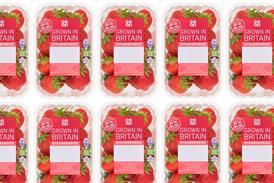
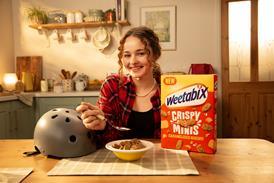

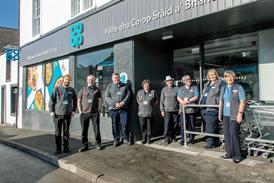
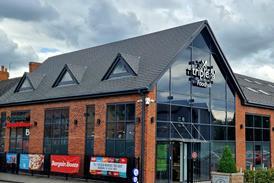
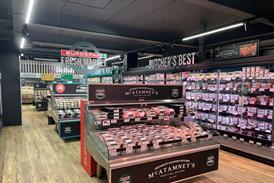

![WG-4003[58]](https://d2dyh47stel7w4.cloudfront.net/Pictures/274x183/4/5/1/353451_wg400358_6083.jpg)




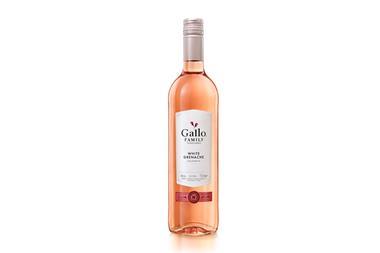
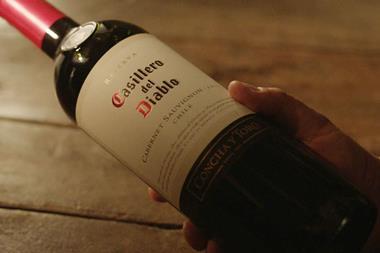
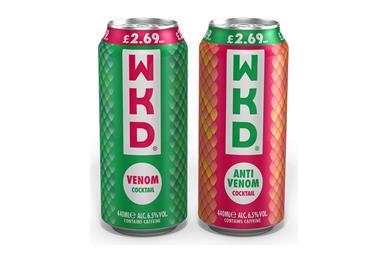
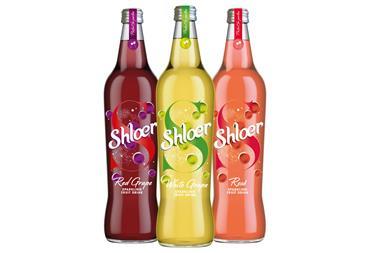
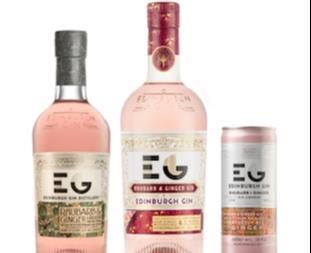
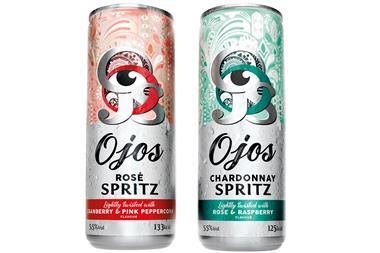
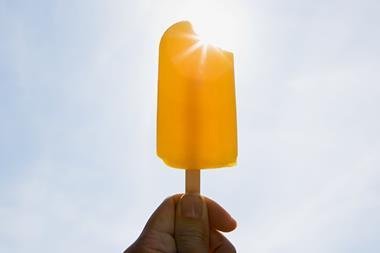
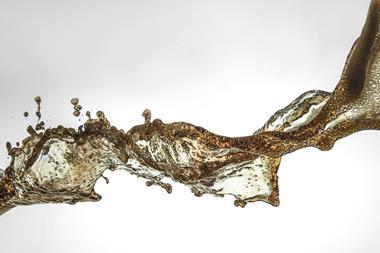
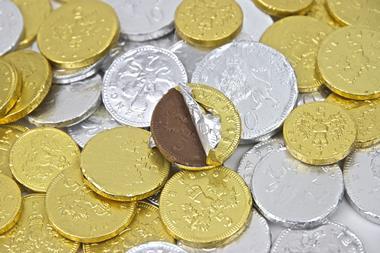
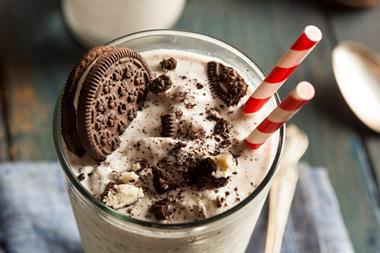

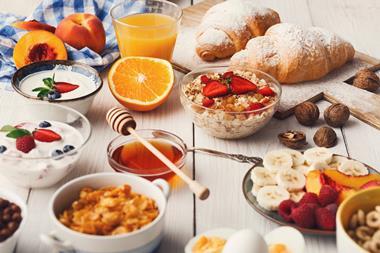
No comments yet